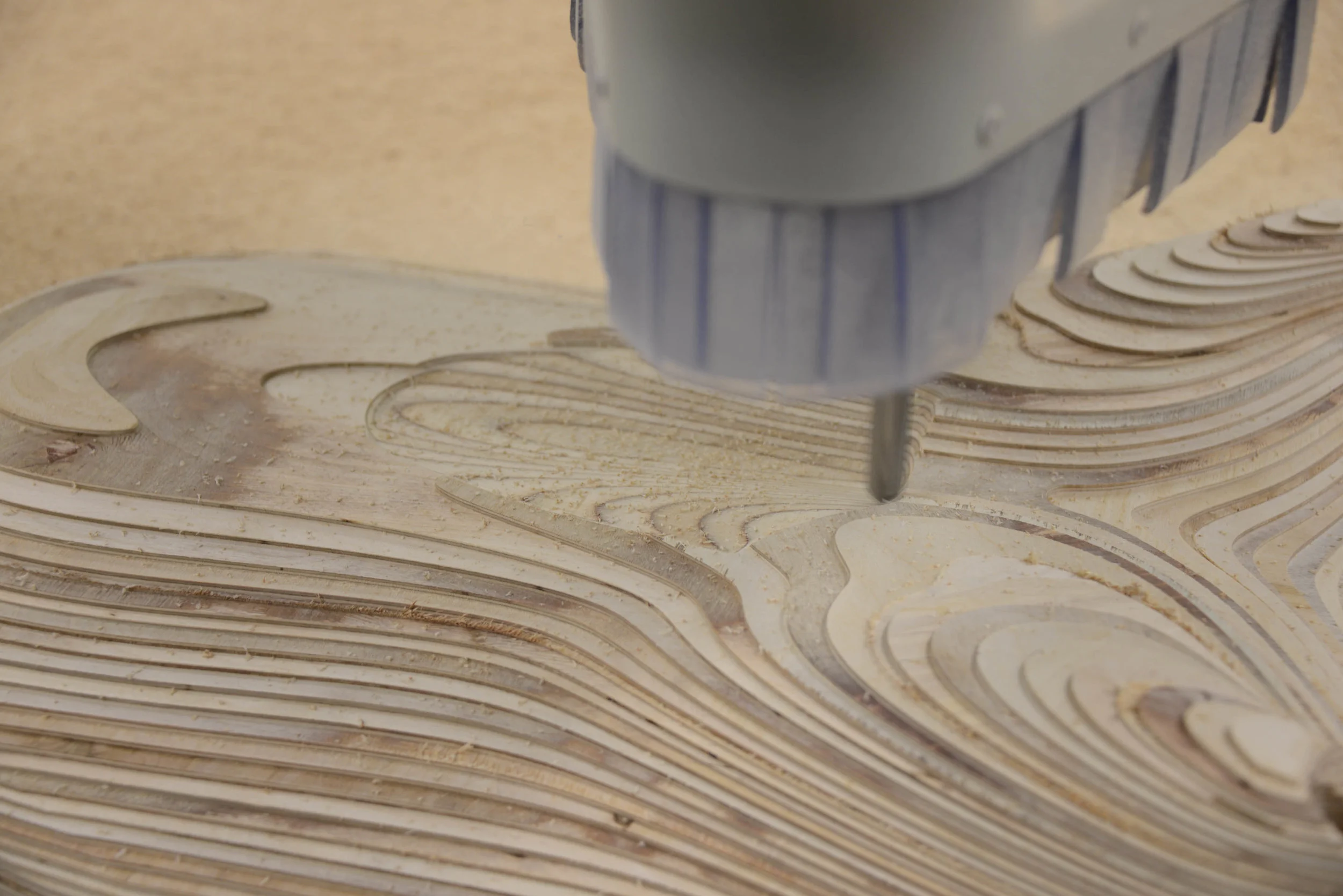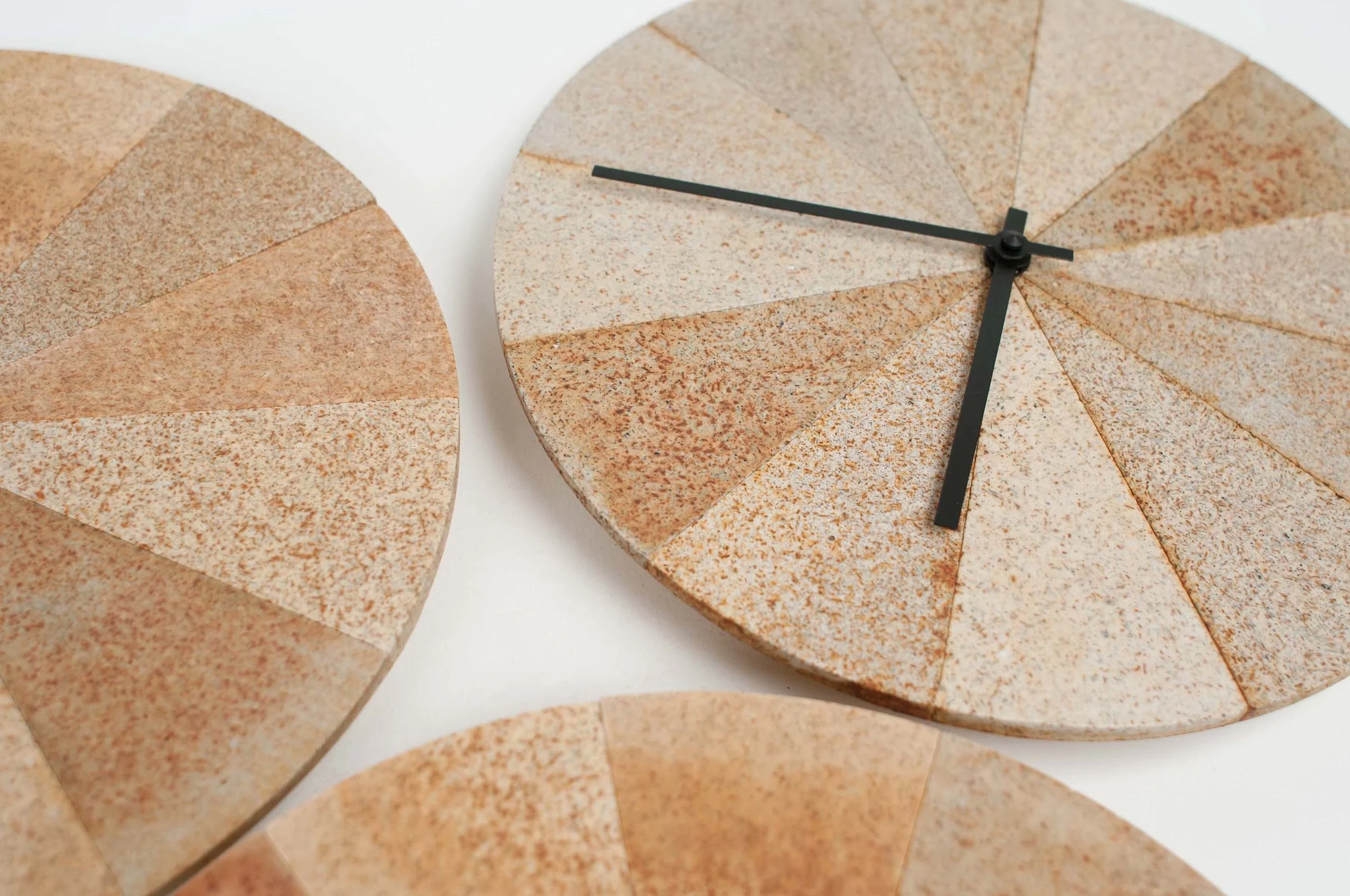A natural, organic existence born from advanced digital fabrication–The work of Ammar Kalo
By Purva Chawla
How can an object whose making has been so meticulously planned, so carefully executed with mathematical precision and the aid of digital fabrication techniques, seem to be so softly and seamlessly organic?
This question is likely to run through your mind multiple times, as you view and explore the work of designer and architect Ammar Kalo. An educator and researcher, alongside the roles mentioned above, Ammar creates beautiful furniture and designed objects that appear to be both naturally existent and crafted at once.
Unlike the case of other designers, that sensation of being ‘natural,' in Ammar’s work, isn’t just owed to his frequent use of natural materials like wood or fabric. Nor does this organic quality boil down to a collection of rounded edges and strategically places curves. Ammar’s approach is far more nuanced–reflected in slopes, joints, crevices, cavities in surfaces, and the composition of his base materials themselves.
A closeup of Ammar Kalo's Coffee Table
In his most signature creation, the Stratum Chair, he engineers the union of several layers of laminated plywood, and then carves away at the whole, using CNC milling. The result is a curvaceous, flowing, organic form. However, more interesting than the form itself even is the prominent and bold grain that Ammar deliberately generates in this resulting wooden form. This grain creates the sensation of a new ‘enhanced’ materiality somehow. Captivated by its magnified internal texture, strong pattern, and hues, you get the recurring feeling that you are looking at a wooden object that is as ‘Woody’ as it can ever get.
The Stratum Chair, by Ammar Kalo
Strati, by Ammar Kal, created using the same fabrication techniques as Stratum
Elsewhere, in Ammar’s MULTI-TIER SHELF system, it is the joinery and connection between wooden parts that holds the viewer’s attention. Something that can so easily become an abrupt junction of sharp lines and crisply cut surfaces is instead gently curved, carved and fitted–making you feel that these individual pieces always belonged together, and almost grew as one, from a common source.
A close-up of the joinery in Ammar Kalo's MULTI-TIER SHELF system
Finally, in his project [Fabric]ations, Ammar creates a series of resin stools that trap hand-assembled fabric arrangements within them, to provide soft seating tops. The stools up-cycle waste fabric into functional pieces of furniture, and the overall result is soft, comfortable, and again effortlessly natural.
[Fabric]ations by Ammar Kalo
These are the qualities, to our mind, that make Ammar’s work immensely successful. While always charging forward and evolving in its technique–employing such methods as robotic fabrication, Incremental Sheet Metal Forming, and advanced CNC milling–Ammar’s work continually retains and reimagines the best of what it means for something to be ‘natural’ and even 'imperfect.' The Director of CAAD Labs and Assistant Professor at the American University of Sharjah, Ammar manages to bring together two contradictory realms–technological advancement with simple, natural ideas and forms–into intuitive, subtle design objects.
For Form&Seek’s ’Age of Man’ exhibit in Milan next month, Ammar will be showing his MULTI-TIER SHELF system, a product he developed just last year. This system has shelves made of CNC milled Maple wood, that rest on slanting vertical legs, unaided by any hardware connections. The slanted legs are pinned to the topmost shelf, using custom-made solid brass pins, which allow the legs to fold down for flat packed shipping.
“The result is that the Maple wood legs seem to organically grow from the horizontal top surface, and drop down to the ground,” Ammar says. Additionally, the connection points where more than two pieces of wood come together in this system are either highlighted with the manipulation of the surrounding surface–to create a ‘soft’ formal response–or through a tectonic expression that elegantly fuses the members together.
Functionally, the system allows for flexibility and change– additional shelves can be installed at different heights and openings, with the help of leather collars that match the leg-slant angles. Each shelf has an inset camel leather collar, which snugly hugs the legs of the shelving system, and prevents them from sliding down. While the design is milled out of solid hardwood, the amount of waste is strategically minimal here. All parts are designed to be milled within standard lumber dimensions and optimized to reduce large offcuts.
Learn more about this project and Ammar’s work and process at large, in our recent conversation with him.
MD: Ammar, How does the MULTI-TIER SHELF system fit in with your practice as a whole and respond to the themes you explore?
Ammar: This piece is a continuation of a series in my work that revolves around exploring different types of joints, and the ways in which they can be highlighted and accentuated. This has been an area of interest for me for the past few years, and with every project, I try to work either with the same materials to create new effects, or different materials and explore how the same idea might manifest itself with new materials.
MULTI-TIER SHELF system by Ammar Kalo
MD: How does the idea of the ‘Age of Man’ express itself in your work?
Ammar: Signaling the beginning of the Age of Man, Laugier’s architectural theory of the ‘primitive hut’ explores the anthropological relationship between humans and their environment, giving birth to the creation of architecture and the physical embodiment of humans’ impact on their surroundings. Part of the conceit of this theory was that primitive shelters were inspired by structural principles found in nature. The MULTI-TIER SHELF abstractly explores this concept with very simple connections and part overlaps that alone can’t provide a stable structure, but together, as a whole can result in a rigid functional object.
MD: You have worked with a variety of materials and fabrication techniques through the spectrum of your work. Tell us about this material experimentation.
Ammar: It is true– I have worked with multiple materials over the past few years, and I like to try out any new materials I can get my hands on. Some of the materials include wood, metals, polycarbonate sheets, cast resin, and up-cycled fabric. Last year I worked on a collection mostly made out of wood, and my ‘signature’ design, Stratum, is made out of laminated Birch Plywood. I love working with laminated plywood because, in a way, I get to decide what the grain pattern will look like.
N-Bowls by Ammar Kalo, explore metal as a material, with robotic fabrication and Incremental Sheet Metal Forming.










![[Fabric]ations by Ammar Kalo](https://images.squarespace-cdn.com/content/v1/570a8015f699bb7295b31415/1489073769989-13OSDIA91I52YL84OJF1/image-asset.jpeg)



